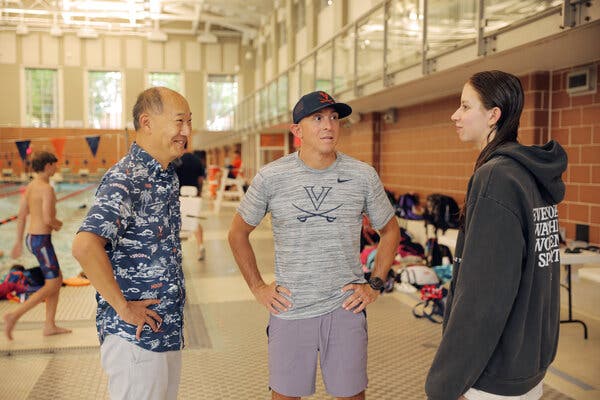Kate Douglass, a statistics graduate student and the second-fastest swimmer in the world this year in two Olympic swimming events, has always been good with numbers. But before she enrolled at the University of Virginia, she never considered that swimming itself was a math problem that she could try to solve.
That changed when she realized the concepts she was studying in the classroom could be used in her sport. These days, Douglass often gets into the pool while wearing a belt that holds an accelerometer, the same device found in smartphones and fitness watches. As she swims, the sensor measures her movement in three spatial directions 512 times per second.
“That’s helped me to figure out areas of my stroke where I can be more efficient,” said Douglass, 22. So far, so good: On Saturday, she began a busy Olympics schedule by winning a silver medal in the 4×100 freestyle relay.
The swimmers at the Paris Olympics all have the same challenge: to swim as fast as they can by moving through the water in a way that maximizes the force propelling them toward the finish line, while minimizing the force that slows them down. Elite swimmers use familiar tricks to reduce the resistance known as drag, like shaving before big meets and wearing swimsuits made from the same material as Formula 1 racing cars.
Though the sport has long relied on a swimmer’s feel in the water or a coach’s eye from the pool deck, Douglass and several of her U.S. Olympic teammates are exploring a new competitive frontier. Under the direction of a Virginia mathematics professor, Dr. Ken Ono, they are measuring and analyzing the forces they create as they swim, to optimize the way they move through the water. Details as seemingly small as Douglass’s head position in her underwater breaststroke pullout, or how her left hand enters the water on her backstroke, have been focal points as she has worked to trim the hundredths of a second that make the difference between medals in the sport.
